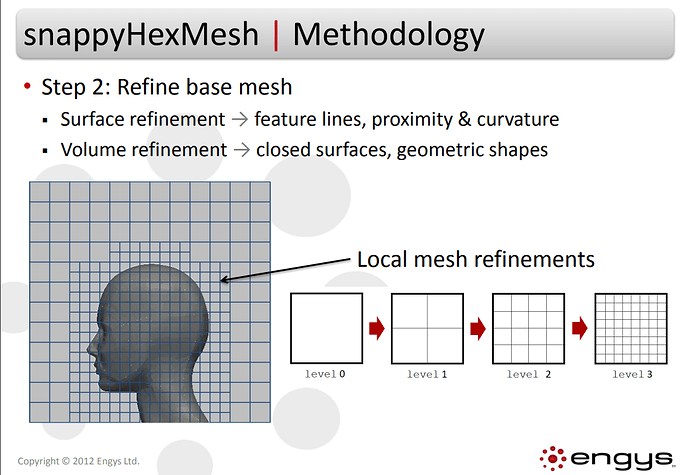Hi,
HOW TO SET THE MESH CORRECTLY is my big question right now.
I read several (if not all) posts on Github and here, but various are from 2016, with the old grading component and the refinement regions, so at the moment I am pretty confused about what still applies and what doesn’t…
For SnappyHexMesh I read https://openfoamwiki.net/images/f/f0/Final-AndrewJacksonSlidesOFW7.pdf and I also found this other interesting document by the way: http://www.training.prace-ri.eu/uploads/tx_pracetmo/snappyHexMesh.pdf + I read the correspondent part of OF user manual.
I am sort of getting at least the logic behind, not the details just yet.
However, there are inputs in BF components that I really struggle to understand. In particular, what I can’t find any explanations about are the inputs for the BF geometry component, which seem then to be repeated in similar ways also in the tunnel and/or in the snappy.
As it’s probably difficult to explain here what I mean, please see the 9 points on the following images:
![Slide3|690x388]My overall understanding is:
A. there is a geometry that is made into a BF geometry
B. the bounding box wraps these geometries, sets parametrically the dimensions of the windtunnel + defines what is the refinement region for the blockmesh to be applied
C. The blockmesh is applied through the use of the autograding, which defines a denser mesh in correspondence of the bounding box, and a progressively less dense mesh going towards the tunnel’s extremes.
D. The SnappyHexMesh refines the mesh around the buildings (or any other thing, object of the study) by diving the cells, etc etc as per documents above.
Is this pretty much correct please?
If so, in this ABCD process, what I really don’t get are the 9 points of my images above and in particular points 1, 2, 3, and 4 (incl.my assumption on bounding box function), if answering all 9 is too much.
Please can anyone help me with this, possibly soon-ish…? Thank you very much in advance.
Viola
